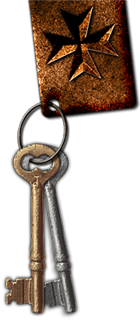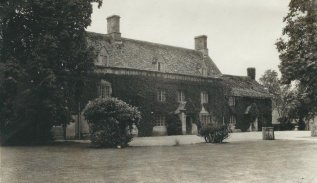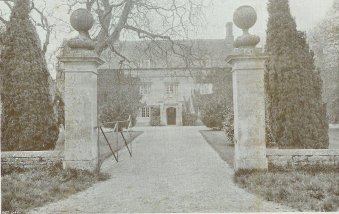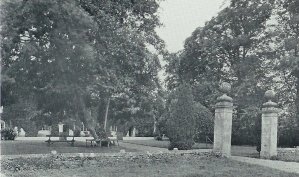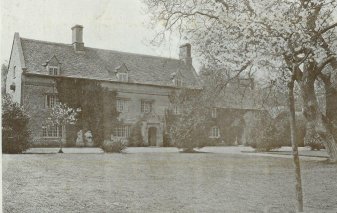
History of Friars Court
The first recording of buildings on the site of Friars Court dates back to 1149 and the establishment of the first ‘Hospitaller’ in Oxfordshire by the charitable, religious order of the Knights Templar Order of St. John of Jerusalem. An ‘Hospitaller’ was a place of rest for travellers and from it are believed to derive the words ‘hospital’ and ‘hostel’.
In a chronicle of 1338, Friars Court is mentioned as being “... a small house with gardens, dovecote and adjacent crofts worth 30s a year”. This accommodated the preceptor (the only serving brother), a chaplain, a steward, two servants and three pensioners.
After the building of a bridge over the River Thames at nearby Radcot (now the oldest surviving crossing to remain standing), the increase in passing traffic must have had a strong influence in making Friars Court a more important stopping point.
By the middle of the 15th century the “small house” is recorded as having become "...a stone-built hall with a ‘great chamber’; a separate kitchen, with an adjoining building; latrines to the east; a bake-house and a stone-built chapel with a walled garden to the north".
The house remained under auspices of the Order of St John until the Dissolution of the Monasteries in the 1530s after which it became a private residence. From 1558 until the turn of the 19th century Friars Court had a varied succession of owners, often joint owners, most of whom let the house and farmland to tenants. During this period the most significant change to the house, before the alterations of the 19th century, was the addition of an attic storey and the remodelling of the façade in the 1650s.
Friars Court was still called a manor in 1803, though when sold in 1835 it appears the new owner did not acquire the manorial rights along with the house. Between that time and 1886 the house changed considerably: the most significant alteration saw the existing spiral main staircase replaced by a closed-string straight flight running between two galleried landings; this required radical re-arrangement of rooms on all floors and for one window in the façade to be blanked off. These sweeping changes extended to creating more defined servants’ rooms in the attics and the installation of indoor plumbing for the family. Externally tall stone entrance pillars, along with two ’Gothic’ porches, were added and the coach house built.
In 1917 Richard Willmer arrived as a tenant and three years later, in 1920, he bought the house and farm which at that time comprised of just 220 acres. Richard lived in the house until passing it to his son John in 1963. John continued to reside at Friars Court whilst building the farm up to its current 630 acres. He was succeeded by his son Charles in 2014 who now lives in Friars Court and manages the estate.
In 2017 the Willmer's celebrated 100 years of residency at Friars Court, then in 2020 their centenary of ownership - a small museum about the house, farm and family is located in the old coach house.
The house is not open to the public
